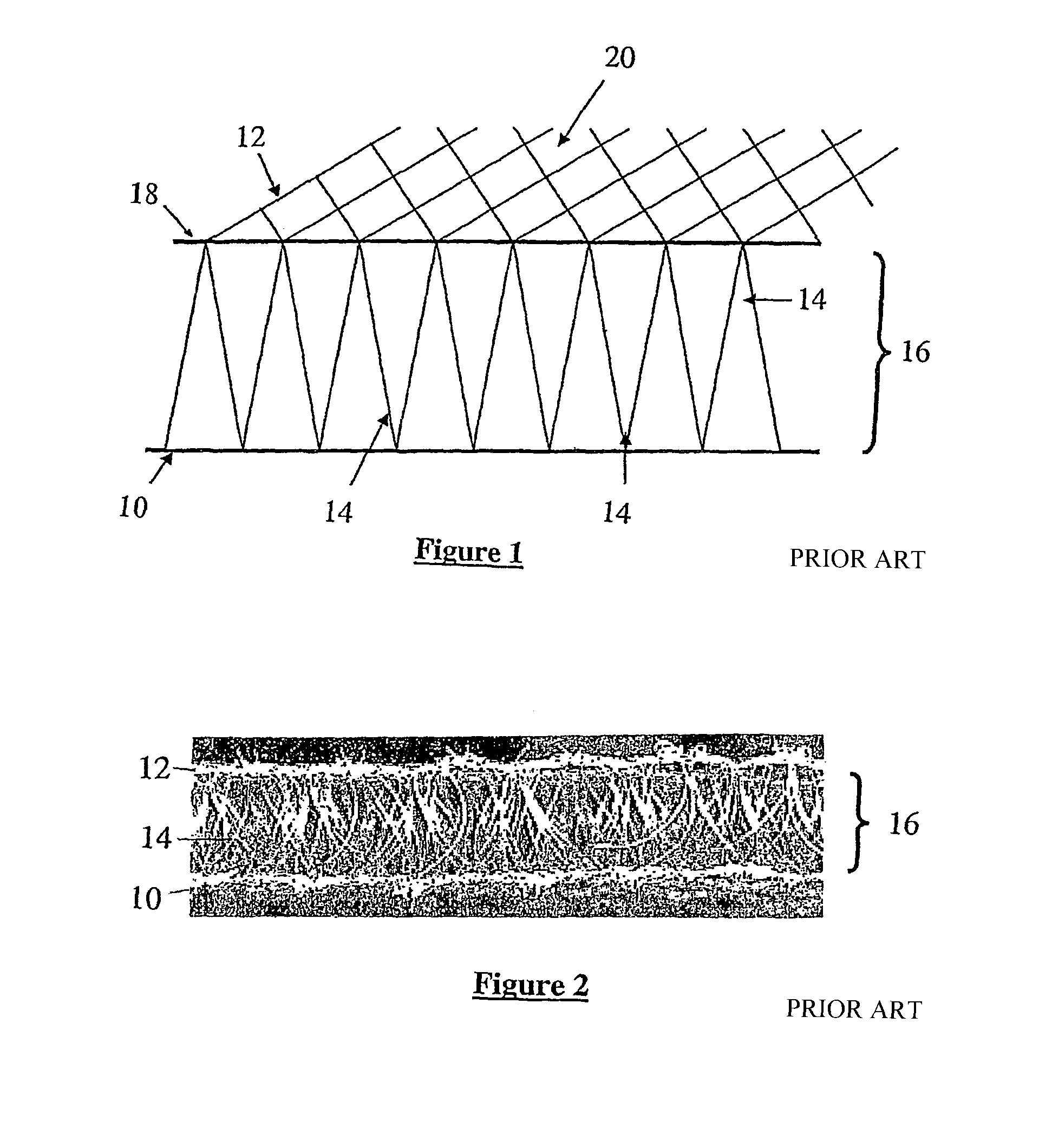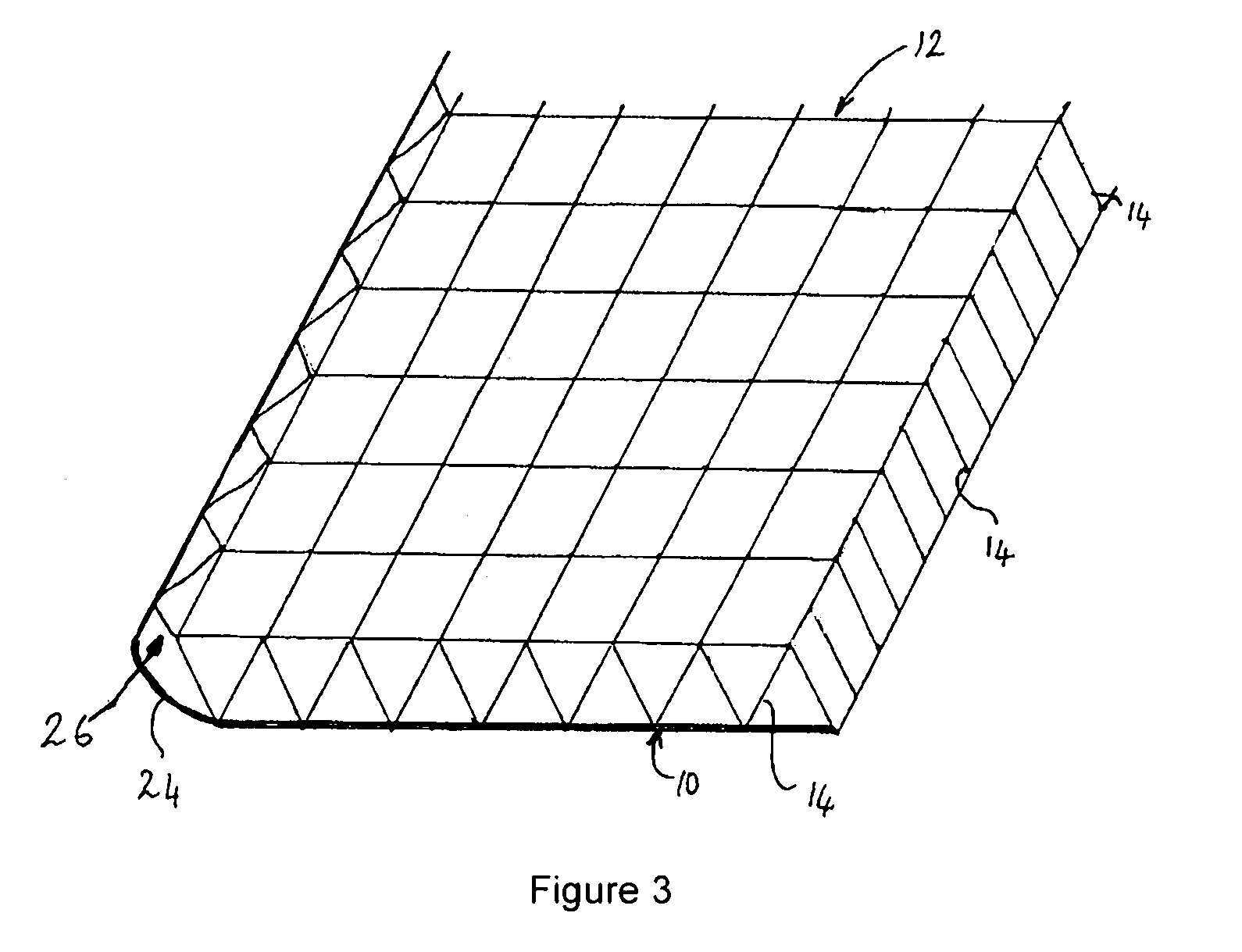Impregnated cloth
a cloth and impregnated technology, applied in the field of cloth, can solve the problems of increasing the heat input required for effective heat cutting, different properties of the edge region, and difficulty or inability to heat cut and seal, and achieve the effect of increasing the strength
- Summary
- Abstract
- Description
- Claims
- Application Information
AI Technical Summary
Benefits of technology
Problems solved by technology
Method used
Image
Examples
example 1
[0117]A high alumina cement is loaded into the fabric shown in FIG. 3 using the vibration and brushing techniques described above to form a filled cloth. Water is used to set the cement. The theoretical optimum water: cement ratio in this case is 0.4 by weight. The cloth has a porous face 10 of sufficiently closed construction to prevent the dry cement powder and also the cement powder once soaked in water from passing through it in significant quantities, the other face 12 has an impermeable PVC coated face to close off the pores 20. The two faces are linked by monofilament polyethylene linking fibres. The high alumina cement is compacted to give a total dry density of 1.35 g / cm3 and an average thickness of 7.3 mm between the outer surfaces of the two faces.
[0118]The linking fibres are spaced, slightly bowed and of sufficient stiffness such that after immersion in water the swelling of the cement powder between the two faces is constrained to a 14% internal volume increase. When th...
PUM
| Property | Measurement | Unit |
|---|---|---|
| thickness | aaaaa | aaaaa |
| thickness | aaaaa | aaaaa |
| thickness | aaaaa | aaaaa |
Abstract
Description
Claims
Application Information
 Login to View More
Login to View More - R&D
- Intellectual Property
- Life Sciences
- Materials
- Tech Scout
- Unparalleled Data Quality
- Higher Quality Content
- 60% Fewer Hallucinations
Browse by: Latest US Patents, China's latest patents, Technical Efficacy Thesaurus, Application Domain, Technology Topic, Popular Technical Reports.
© 2025 PatSnap. All rights reserved.Legal|Privacy policy|Modern Slavery Act Transparency Statement|Sitemap|About US| Contact US: help@patsnap.com



